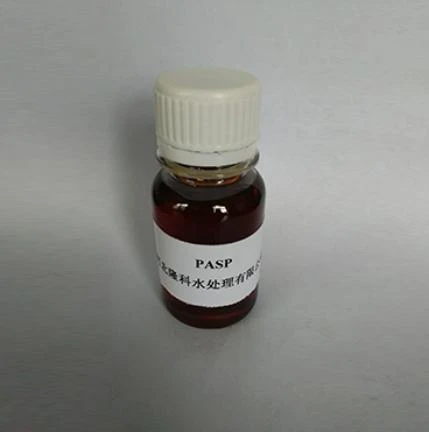Synthesis and Applications of Diethylenetriamine Penta Methylene Phosphonic Acid
Exploring the Versatility of Diethylenetriamine Penta (Methylene Phosphonic Acid)
Diethylenetriamine penta (methylene phosphonic acid), commonly abbreviated as DTPMPA, is a highly specialized organic compound known for its diverse applications across various industries. This chelating agent, which features multiple phosphonic acid groups, plays a pivotal role in sequestering metal ions, enhancing stability in solutions, and improving the efficiency of numerous processes. This article examines the structure, properties, applications, and potential future directions for DTPMPA.
Chemical Structure and Properties
DTPMPA is structurally characterized by a diethylenetriamine backbone, which is attached to five (methylene phosphonic) acid groups. The presence of multiple phosphonic acid groups imparts significant chelating efficiency, allowing DTPMPA to form stable complexes with a variety of metal ions such as calcium, magnesium, iron, and others. This ability to sequester metal ions is invaluable in numerous applications, particularly in water treatment and industrial processes.
One of the notable properties of DTPMPA is its high thermal stability and resistance to hydrolysis, enabling it to function effectively over a wide range of environmental conditions. Furthermore, the acidity of the phosphonic acid groups allows for pH-dependent reactivity, making it adaptable for use in different formulations and processes.
Industrial Applications
1. Water Treatment DTPMPA is widely used in water treatment processes to prevent scale formation and corrosion in pipelines and industrial equipment. By chelating metal ions that would otherwise precipitate and form scale, DTPMPA helps to maintain the integrity of systems and promotes efficient water use.
2. Detergents and Cleaning Agents In the formulation of detergents, DTPMPA acts as a builder, enhancing the cleaning efficacy by softening water. It effectively removes hard water ions, allowing surfactants in detergents to work more efficiently. Its biodegradability also makes it a preferred choice in environmentally friendly cleaning formulations.
diethylenetriamine penta methylene phosphonic acid

3. Agricultural Chemistry DTPMPA plays a role in agriculture as well, particularly in the formulation of fertilizers. By chelating essential micronutrients and improving their availability to plants, it ensures that crops receive the nutrients they need for optimal growth. This chelating action also reduces the loss of nutrients through leaching, contributing to more sustainable agricultural practices.
4. Cement and Building Materials In the construction industry, DTPMPA is used as an additive in cement and concrete formulations. It enhances the performance of these materials by improving their workability and reducing the risk of efflorescence, thus contributing to the longevity and durability of structures.
5. Cosmetics and Personal Care The cosmetic industry has also recognized the value of DTPMPA in stabilizing formulations and enhancing product performance. Its ability to bind metal ions ensures that formulations are free from undesirable interactions that could affect texture and efficacy.
Future Perspectives
With the growing emphasis on sustainability and environmental responsibility, the demand for effective and environmentally-friendly chelating agents like DTPMPA is expected to rise. Research into its applications in bioremediation and environmental cleanup is particularly promising. The compound’s ability to bind heavy metals could play a significant role in efforts to detoxify contaminated water and soil.
Moreover, as nanotechnology and advanced materials science continue to evolve, there is potential for DTPMPA to be integrated into new materials and products, enhancing their performance while maintaining eco-friendliness. The continued development of biodegradable formulations will likely drive innovation in its use across industries.
Conclusion
Diethylenetriamine penta (methylene phosphonic acid) stands out as a versatile and effective chelating agent with a wide array of applications in different fields. From water treatment to agriculture and beyond, its unique properties enable it to address various challenges, particularly in enhancing efficiency and sustainability. As industries increasingly shift towards eco-friendly practices, the role of compounds like DTPMPA will become ever more critical in shaping future solutions. Continued research and development will not only expand its applications but also establish it as a cornerstone of sustainable practices in both industrial and domestic settings.
-
Pbtc Scale InhibitorPBTC: A Scale Protector for Industrial Water TreatmentNewsAug.05,2025
-
Organic Phosphonate: An Efficient Defender in the Field of Scale InhibitionNewsAug.05,2025
-
Hydrolyzed Polymaleic Anhydride: Green Pioneer in Scale Inhibition FieldNewsAug.05,2025
-
PAPEMP Polyamino Polyether Methylene Phosphonic Acid For SaleNewsAug.05,2025
-
Flocculant Water Treatment: A Pioneer in Purification in the Field of Water TreatmentNewsAug.05,2025
-
Benzyl Isothiazolinone: An Efficient and Broad-Spectrum Antibacterial Protective GuardNewsAug.05,2025





